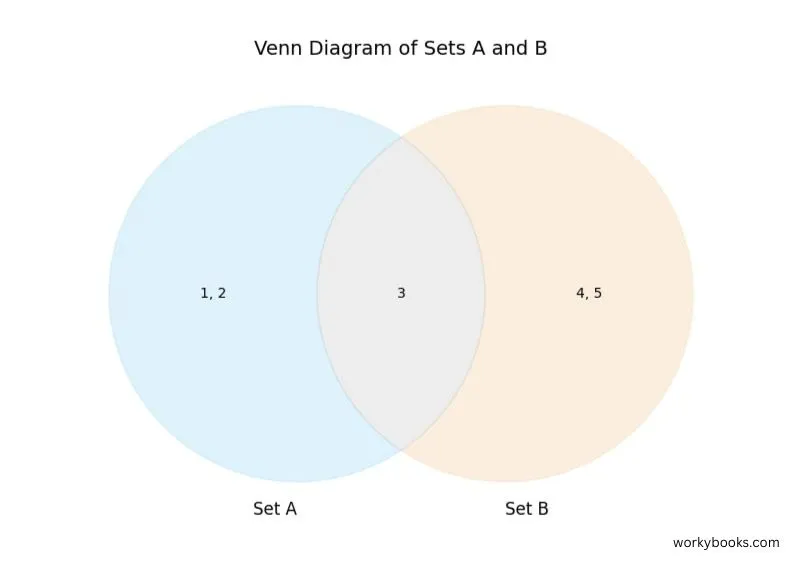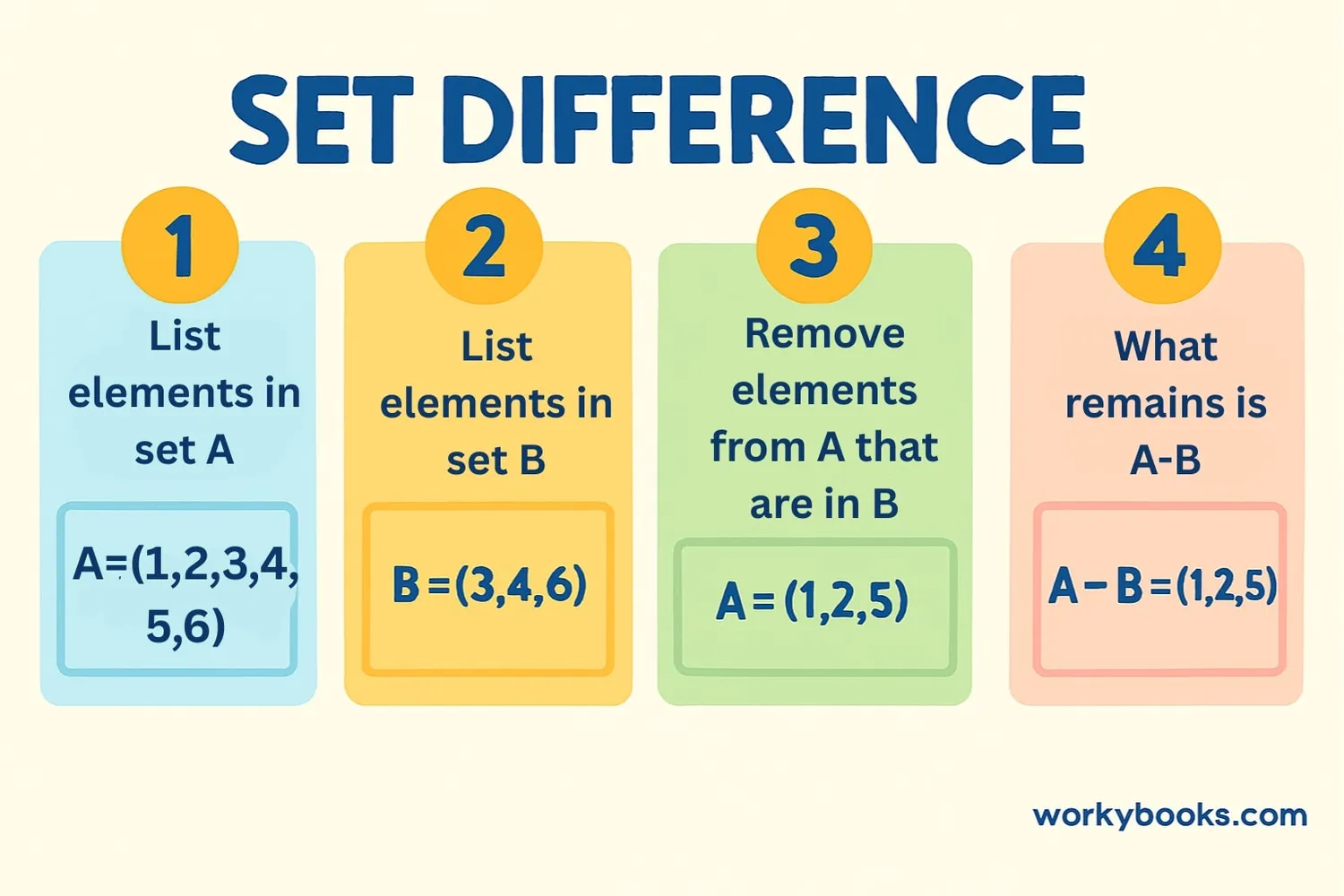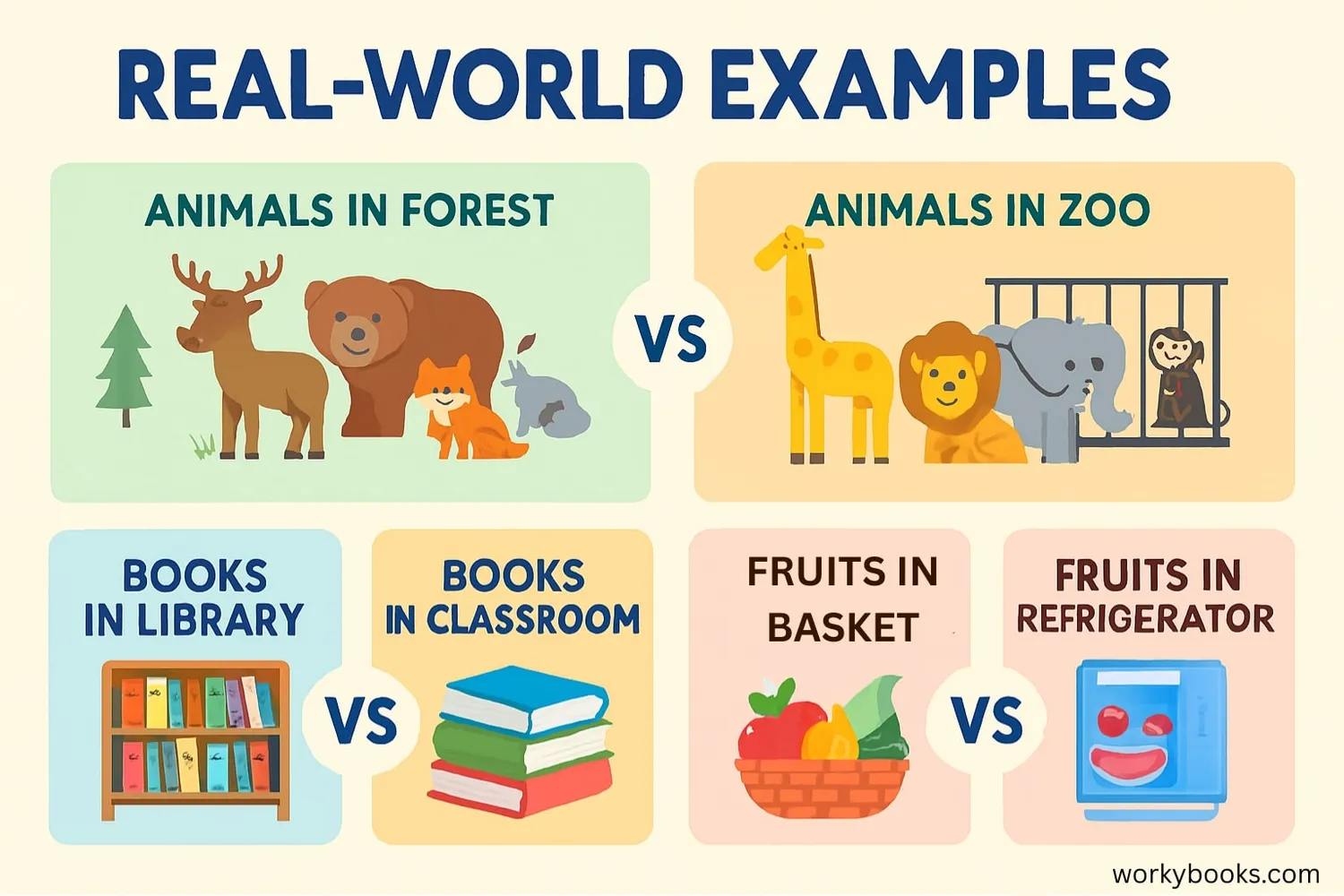Difference of Sets - Definition, Examples, Quiz, FAQ, Trivia
Learn about set differences with simple explanations, visual examples, and practice activities
What is Set Difference?

A set is a collection of distinct objects. The difference of sets (also called the relative complement) refers to the elements that are in one set but not in another.
For two sets A and B, the difference A - B contains all elements that are in A but not in B. Similarly, B - A contains elements that are in B but not in A.
Think of it like this: If you have a bag of red marbles (set A) and a bag of blue marbles (set B), the difference A - B would be all the marbles that are only red and not blue.
Set Difference Definition
This means: A minus B contains all elements x such that x is in A and x is not in B.
Key Concept
The difference of sets is like subtraction for collections. It shows what's unique to the first set compared to the second set.
How to Find the Difference of Sets

Finding the difference between two sets is straightforward when you follow these steps:
Step 1: Identify all elements in the first set (set A).
Step 2: Identify all elements in the second set (set B).
Step 3: For each element in set A, check if it is also in set B.
Step 4: If an element is in A but not in B, include it in A - B.
Let's practice with an example:
Set A = {apple, banana, cherry, date}
Set B = {banana, date, fig}
A - B = {apple, cherry} (because these are in A but not in B)
B - A = {fig} (because fig is in B but not in A)
Remember
A - B is different from B - A. The order matters in set difference!
Real-World Examples

Set differences are all around us. Here are some real-world examples:
Example 1: Classroom Supplies
Set A = {pencils, erasers, rulers, crayons} - Supplies in the classroom
Set B = {pencils, erasers, notebooks} - Supplies in the backpack
A - B = {rulers, crayons} (items in classroom but not in backpack)
B - A = {notebooks} (items in backpack but not in classroom)
Example 2: Favorite Fruits
Set A = {apple, banana, orange} - Fruits Sarah likes
Set B = {banana, grapes, kiwi} - Fruits Tom likes
A - B = {apple, orange} (fruits only Sarah likes)
B - A = {grapes, kiwi} (fruits only Tom likes)
Example 3: Sports Teams
Set A = {soccer, basketball} - Sports played at school
Set B = {basketball, tennis} - Sports played at the park
A - B = {soccer} (sports only at school)
B - A = {tennis} (sports only at the park)
Set Difference Summary
| Set A | Set B | A - B | B - A |
|---|---|---|---|
| {1, 2, 3} | {3, 4, 5} | {1, 2} | {4, 5} |
| {dog, cat, fish} | {cat, bird, hamster} | {dog, fish} | {bird, hamster} |
| {red, blue, green} | {blue, yellow, purple} | {red, green} | {yellow, purple} |
Practice Tip
Look for set differences in your daily life - your toys, books, or even the food in your kitchen!
Set Difference Practice Quiz
Test your understanding of set differences with this 5-question quiz. Choose the correct answer for each question.
Frequently Asked Questions
Here are answers to common questions about set differences:
Math Trivia
Discover interesting facts about sets and mathematics:
Origin of Set Theory
Set theory was developed by Georg Cantor in the 1870s. He was studying mathematical infinity when he created this fundamental branch of mathematics.
Sets in Computer Science
Set operations like difference are used in database searches, internet search engines, and programming to find unique data or filter information.
Earth's Circumference
The Earth's circumference is about 40,075 km at the equator. Eratosthenes first calculated this around 240 BC using shadows and geometry!
Measuring Earth
To measure Earth's circumference in miles: 40,075 km ÷ 1.609 ≈ 24,901 miles. This measurement helps us understand our planet's size.





